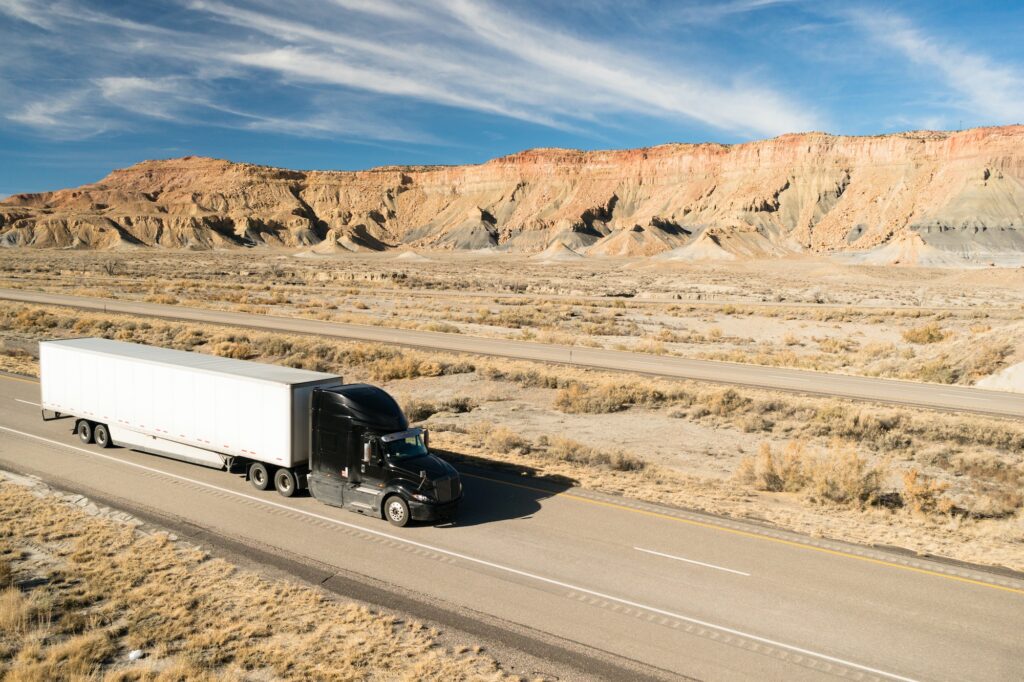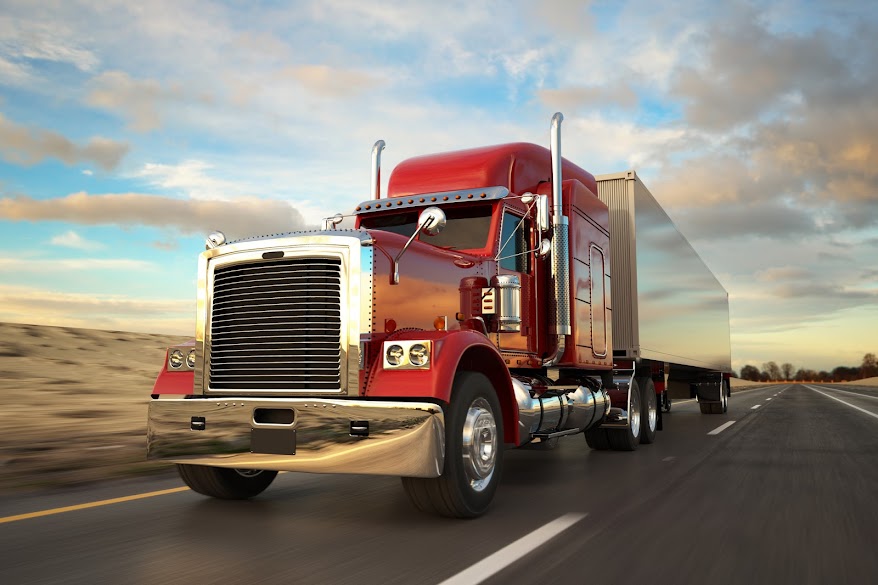Many car drivers get frustrated when sharing the road with commercial semi-trucks, as trucks move slowly and take longer to switch lanes. However, don’t let this impatience drive you into reckless habits. You need to take extra caution when commuting alongside trucks as truck accidents are often catastrophic, especially for the passengers in the smaller car. Learn about the most important semi-truck safety tips below. If you have had an accident with a semi-truck call one of our St. Louis truck accident lawyers today.
Stay Clear Of Blind Spots
A blind spot is a zone of the roadway around the semi-truck that the driver can’t see through the side or rear-view mirrors. Although trucks have more mirrors than smaller cars for enhanced visuals, they have more blind spots.
The area in front of a truck’s hood is one blind spot to avoid, as the long hood makes it difficult for a truck driver to spot you. The blind spots also extend 30 feet on the truck’s back, most of its right side, and the front half of its left side. Dim your car’s lights to standard low-level settings you drive behind a truck to avoid blinding the driver through the vehicle’s mirrors.
If you can’t see at least two of the truck’s mirrors, you are likely out of the driver’s visibility. Another tip is to check for your reflection in the mirror. If you find yourself in a blind spot, slow down or move ahead to let the driver see you in their mirrors.
Pass Safely
When stuck behind a slow-moving truck, don’t just pass it at the first chance you get. Instead, take extra precautions to pass the vehicle carefully, as trucks cannot stop as quickly as your car can.
The most important tip is to avoid passing the truck on the right side because of the multiple blind spots. Truck drivers find it easier to spot overtaking vehicles if they pass on the left side. Also, don’t overtake trucks on downgrades, as they pick up speed.
Before overtaking the truck, ensure you see it in the mirror and indicate your intention with your turn signal. Accelerate when you move to the left lane to avoid lingering in the blind spot. The truck should be visible in your car’s rear-view mirror as you pull in front.
When a truck passes you, slow down, stay on the right, and give it adequate space to change lanes. If a speeding truck tries to pass you, let it — staying in front increases the likelihood of truck accidents.
Give Them Space
Commercial semi-trucks have longer stopping distances than passenger vehicles. Being too close to these road giants when they turn, slow down, or speed up can result in accidents. Since truck drivers sit high, they see road hazards before any nearby motorist. If the driver brakes suddenly and you are too close, you might rear-end the truck and send your car under it.
Tailgating a truck is also unadvisable, as large debris on the truck’s path may damage your windshield. Keeping enough distance also gives you more time to respond to tire blowouts. Tires on the road often cause unprepared drivers to swerve and hit other vehicles. Thus, don’t drive next to trucks and keep safe distances at all times.

Lookout For Wide Turns
Trucks make dramatic turns to avoid driving off the roadway. When drivers want to make a right turn, they typically swing left and extend to the left lane or oncoming lane.
Some drivers attempt to pass the semi-trailer on the right side as a truck driver makes the turn. However, this maneuver is a recipe for disaster, as the driver cannot see you in the mirror. Don’t place your vehicle to the right of a transfer at a stop sign or red light if the truck in front of you indicates the intention to make a right turn.
Stay Alert
Distractions like preparing a GPS, eating, and texting are dangerous when sharing the road with truck drivers. Typically, truck drivers communicate with lights, especially when merging. If you are distracted when the drivers make signals, you place yourself and your passengers in harm’s way.
If you must make a call, utilize a hands-free device so that you can react quickly if the truck slows down or changes lanes. Don’t drive fatigued or under the influence to ensure you stay focused on trucks.
Buckle Up
The major role of seat belts is to keep you in the car during an accident. The CDC estimates that more than 3 of the 4 people ejected during fatal car accidents die from injuries. In addition to saving lives, seat belts reduce injury in truck accidents. So, you and your passengers should stay buckled up at all times.
Truck accidents are unpredictable, even if you follow the above rules. In case of a truck accident, you want reliable personal lawyers at your side to pursue the compensation you deserve. At Cantor Injury Law, we have secured damages for many truck accident victims, and we will do the same for you or a loved one. Contact us today for a free consultation.
Sharing The Road With Big Trucks: FAQ
Q: Should you pass a big truck just to turn?
A: It’s generally not recommended to pass a big truck just before making a turn. Large trucks have much larger blind spots compared to smaller vehicles, especially on their right side. Passing them before turning can put you in a dangerous situation where the truck driver may not see you while making the turn, leading to a potential collision. It’s safer to wait until after the turn to pass a truck if necessary.
Q: Why do truckers honk when you pass them?
A: Truckers may honk their horns when you pass them for a variety of reasons. One common reason is to alert you to their presence, especially if they feel you are too close or if they suspect you may not see them. It’s a way for them to communicate with other drivers and potentially avoid accidents. Additionally, some truckers may honk as a friendly gesture or to acknowledge your passing.
Q: What should you do when a large truck wants to pass you?
A: If a large truck wants to pass you, it’s important to make it as easy and safe as possible for them to do so. First, check your surroundings and ensure there is enough space for the truck to pass safely. Then, maintain a consistent speed and avoid sudden maneuvers. Signal your intention to move over to the right lane, and when it’s safe, gradually move over to allow the truck to pass. Avoid braking suddenly or slowing down unnecessarily, as this can impede the truck’s ability to pass safely.
Q: What should you do when meeting a large truck on a two-lane road?
A: When meeting a large truck on a two-lane road, it’s crucial to give them plenty of space and maintain a safe distance. Keep to your lane and avoid drifting towards the center line, as this can increase the risk of a collision. If necessary, slow down slightly to ensure there is enough space between you and the truck. Be mindful of the truck’s blind spots, especially if you’re driving a smaller vehicle, and avoid lingering alongside the truck for an extended period.
Q: Should you pass a big truck just to turn?
A: As mentioned earlier, it’s generally safer to avoid passing a big truck just before making a turn. Instead, wait until after the turn to pass the truck if needed. Passing a truck just before a turn can put you in a dangerous position where the truck driver may not see you, increasing the risk of a collision.
Q: Can semi-trucks turn right on red?
A: In most jurisdictions, semi-trucks are subject to the same traffic laws as other vehicles, including right turns on red lights. However, it’s essential to pay attention to any signs or signals at the intersection that may prohibit right turns on red for trucks or other vehicles. Additionally, truck drivers must ensure they have enough space to complete the turn safely and yield to any pedestrians or oncoming traffic before making the turn on red.

